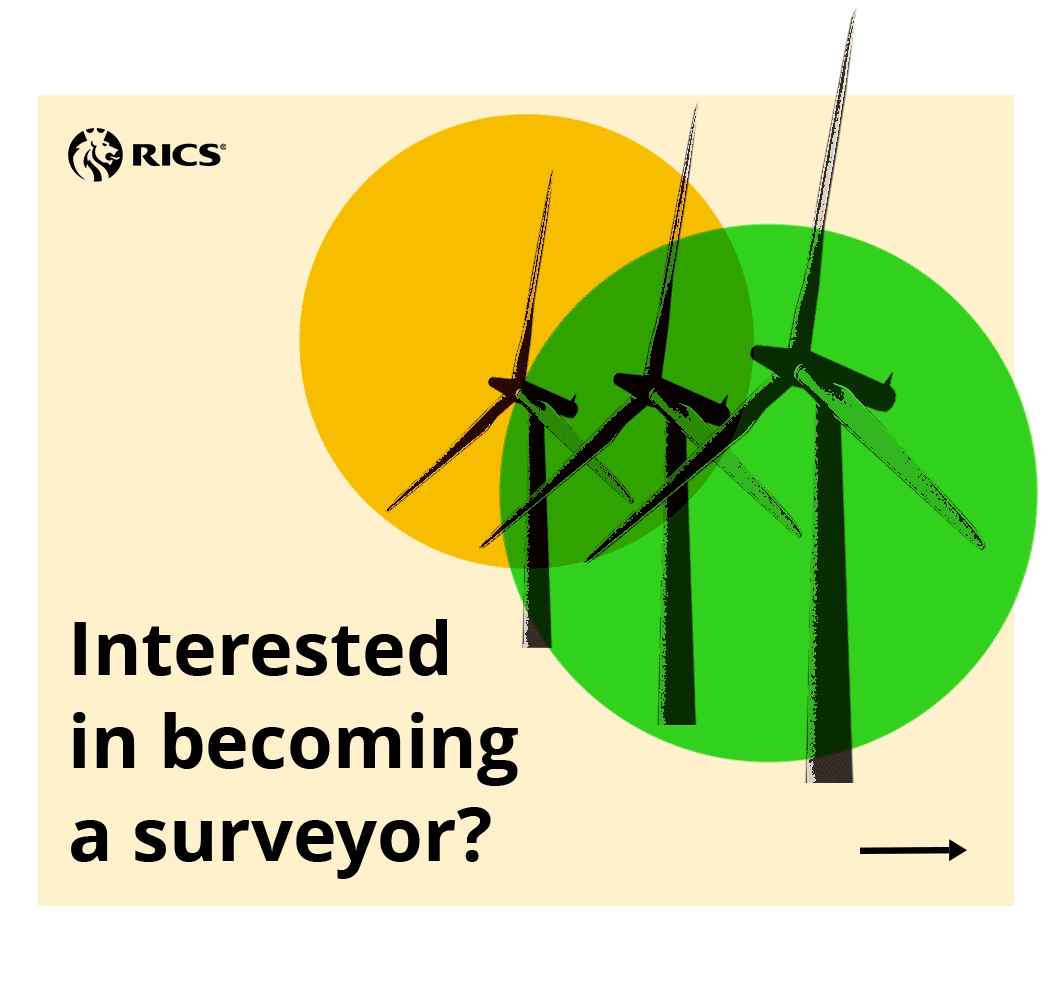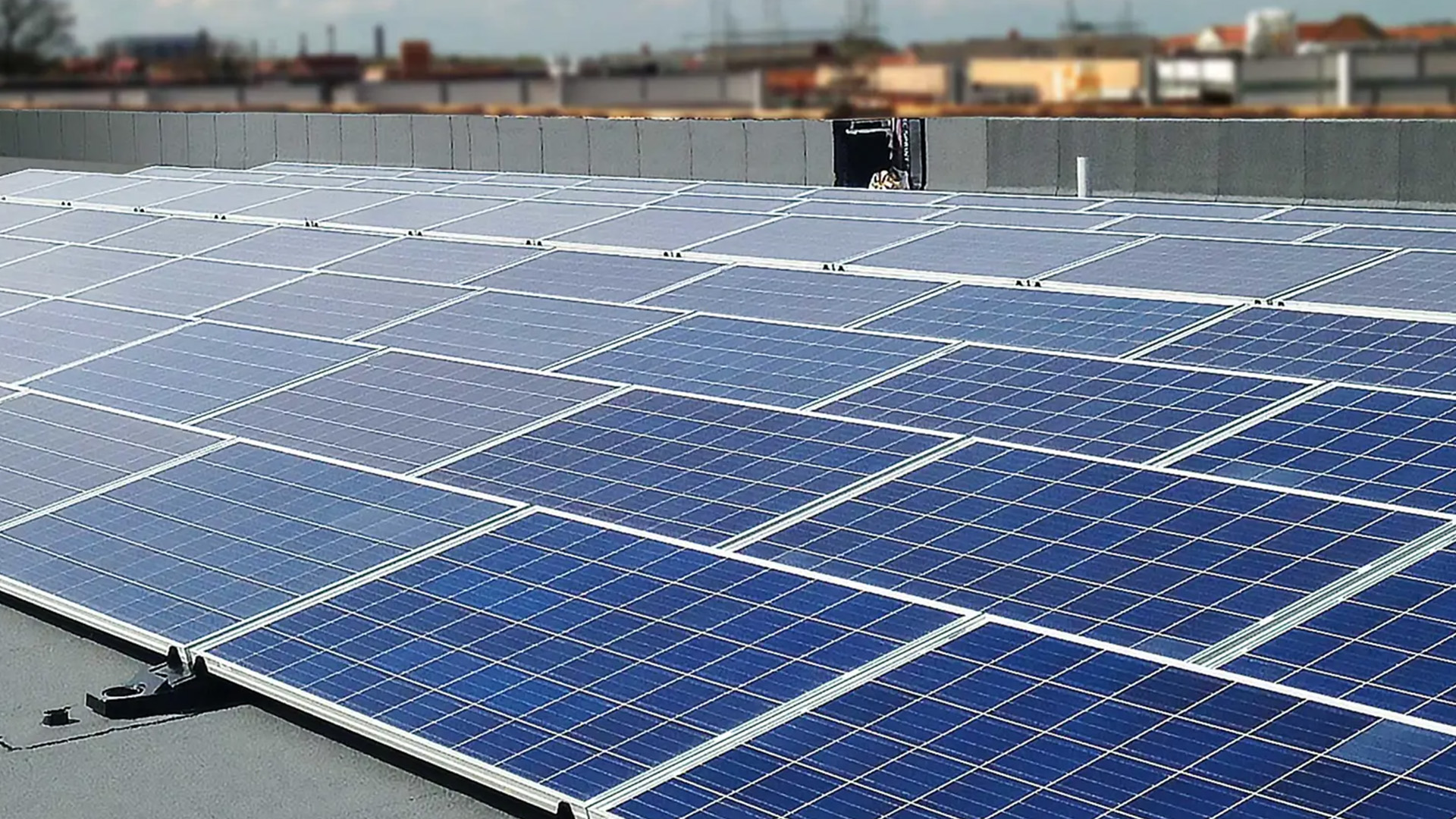It took just seven words in a BBC news headline in March to highlight a growing concern in the UK: “Poole Travelodge evacuated after solar panel fire.”
The incident is one of many like it in the last few years – fires connected with solar PV systems. Another occurred at Bristol’s Grade II-listed science museum, We The Curious, in April 2022. The initial breakout of the fire was attributed to birds damaging a solar panel which triggered a fault in the electrical system.
According to UK government statistics, three fires involving ‘solar panel’ or ‘photovoltaic panel’ in the official description were recorded in 2010, rising to 20 in 2015, and 60 in 2021. There were 66 fires between January and July 2023 alone, according to a report by the Independent newspaper.
These fires are “very much in the insurance industry’s sights right now,” says Tom Raftery, sustainability and PV manager at roofing manufacturer Bauder. And from a Building Safety Act perspective, with the results of the Grenfell Tower Inquiry recently published, he says: “fire is absolutely at the top of everybody's agenda, and quite rightly so.”
Although the situation seems bleak, Raftery puts the fire risk into context: “It’s simply because there are more panels. When well installed and maintained, solar PV is very safe ” The quality of installed panels is significantly improving due to better technology and more awareness surrounding maintenance.
“As an industry, we didn't start installing solar panels on a large scale until 2013 or 2014. Those systems that are not being maintained are hitting 10 to 12 years old and it is some of these that are causing fires.”
Nevertheless, as the volume of solar PVs increases, Raftery says you might only have a fire in every 0.1% of installations, but if there’s 14m panels being installed each year, “that 0.1% can lead to numerous fires.”
In recent years, there has been an enormous push to use solar PV systems as green alternatives to fossil fuels, in the push for net zero across governments and industries.
While the panels can be fitted in a range of locations and surfaces, flat roofs are considered a suitable location for a solar array as the space is mostly unused, unshaded, out of sight, easy to install and easier to maintain. However, a lack of testing and understanding around the impact of roof mounted solar PV arrays on flat roofs has set Bauder on a mission, as it also calls for tighter industry fire regulations.
So how can businesses do all they can to prevent and reduce the impact of rooftop fires, conform to insurance companies’ criteria and be ‘greener’ at the same time?
Why fires happen
In the simplest terms, installing solar PV systems can have an impact on the fire performance of flat roofs, with panel fires sparked by poor installation or maintenance, arc faults and faulty wiring, or from extreme weather events like lightning, hail or birds – as was thought to be the case in Bristol.
As the market continues to grow, says Raftery, the sector will need enough people “who know what they're doing with installation. There are various devices available that will reduce the likelihood of a solar PV electrical fire starting, and these should be utilised wherever possible.”
He calls it, “a real grey area”, adding: “Solar PV installations are increasing, and there are no real standards or test methodologies in place for testing the fire performance of solar panels above flat roofs,” which means companies are coming up with different solutions and solving the issue in different ways.
While there are good solutions in the market to control and prevent fires starting from solar PV systems, “it’s important as an industry we focus on that quality and prevention,” says Raftery. Equally, as an industry, he says, “we've got to look at mitigation. If a fire starts, whatever the cause is, how do we stop that from being a major loss, prevent loss of life and prevent significant damage to the building?
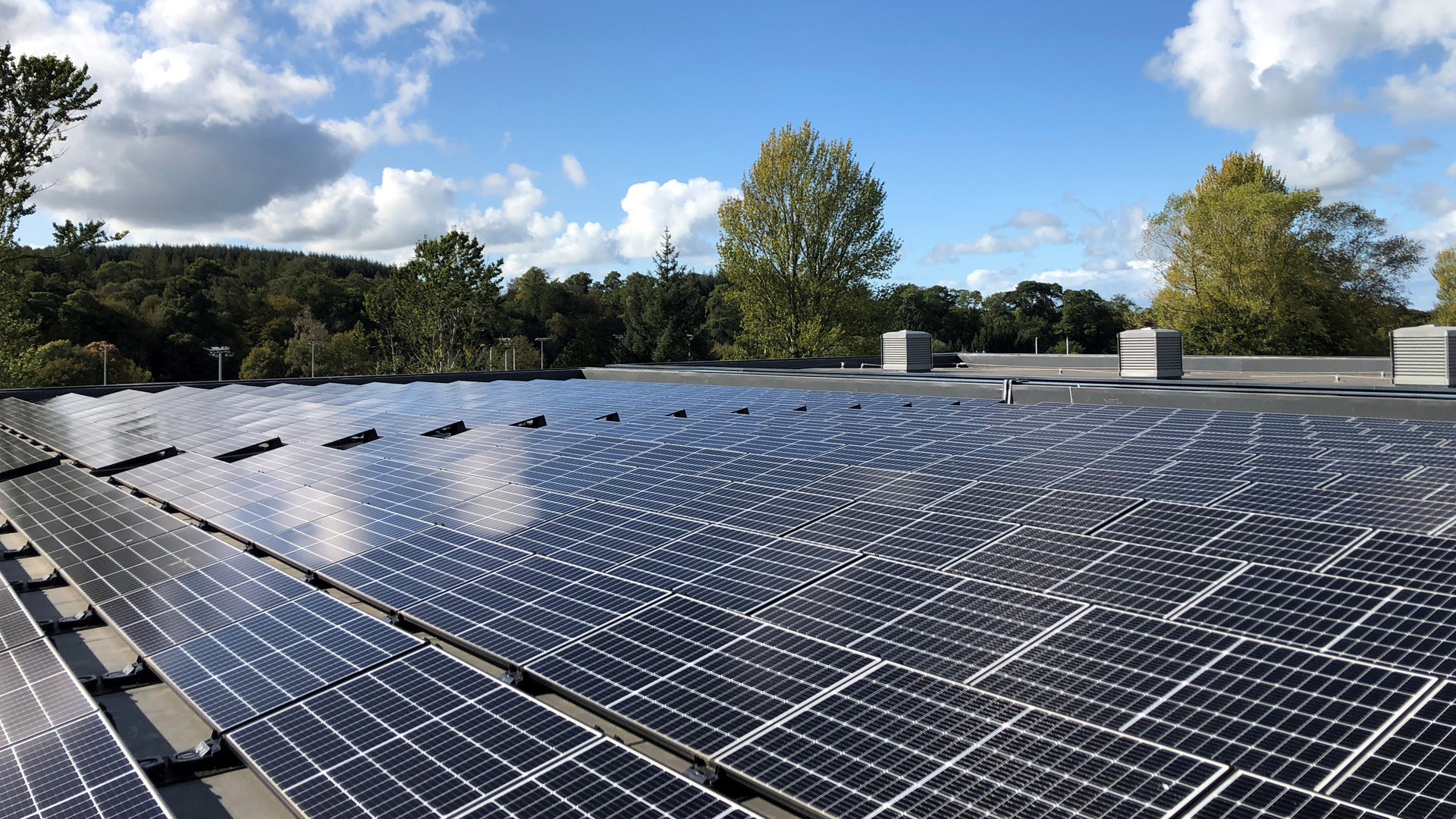
Solar PV from Bauder
Creating a solution
“In the US, there are different standards around fire penetration from roofs,” says Raftery. “We've just gone down a slightly different route in the UK and Europe, which is why we’ve developed a non-combustible cover board inspired by US design but not widely used in Europe.” The cover board is a non-combustible layer, a gypsum board, like a fibreglass-based plasterboard that sits between the roofs’ waterproofing and the insulation.
A risk to the building, and to the occupants, says Raftery, is the fire getting down to the deck and it being combustible. With the cover board, regardless of insulation type the fire is contained above the cover board layer, meaning it cannot easily get to the deck, so shouldn't enter the building.
“The fire load is significantly reduced because insulation is taken out of the equation, but also the damage is limited to above that insulation,” he says. “Where you've got joints in the cover board, there could be some fire damage to the insulation, but it's less likely to penetrate the building and it's far less likely to damage the vapour barrier which could prevent internal damage caused by the water used by firefighters.”
The cover board is about saving lives, but increasingly it is also becoming a requirement for major insurers, such as Zurich and FM Global. Cover boards are a relatively standard item for commercial properties in the US, and eventually it could be a requirement in the UK, something developers and landlords need to take note of if they want to future-proof their buildings and meet the highest possible safety standards when they want to specify solar PV above a combustible deck.
"When you look at solar for a commercial buildings … it makes absolute sense” Tom Raftery, Bauder
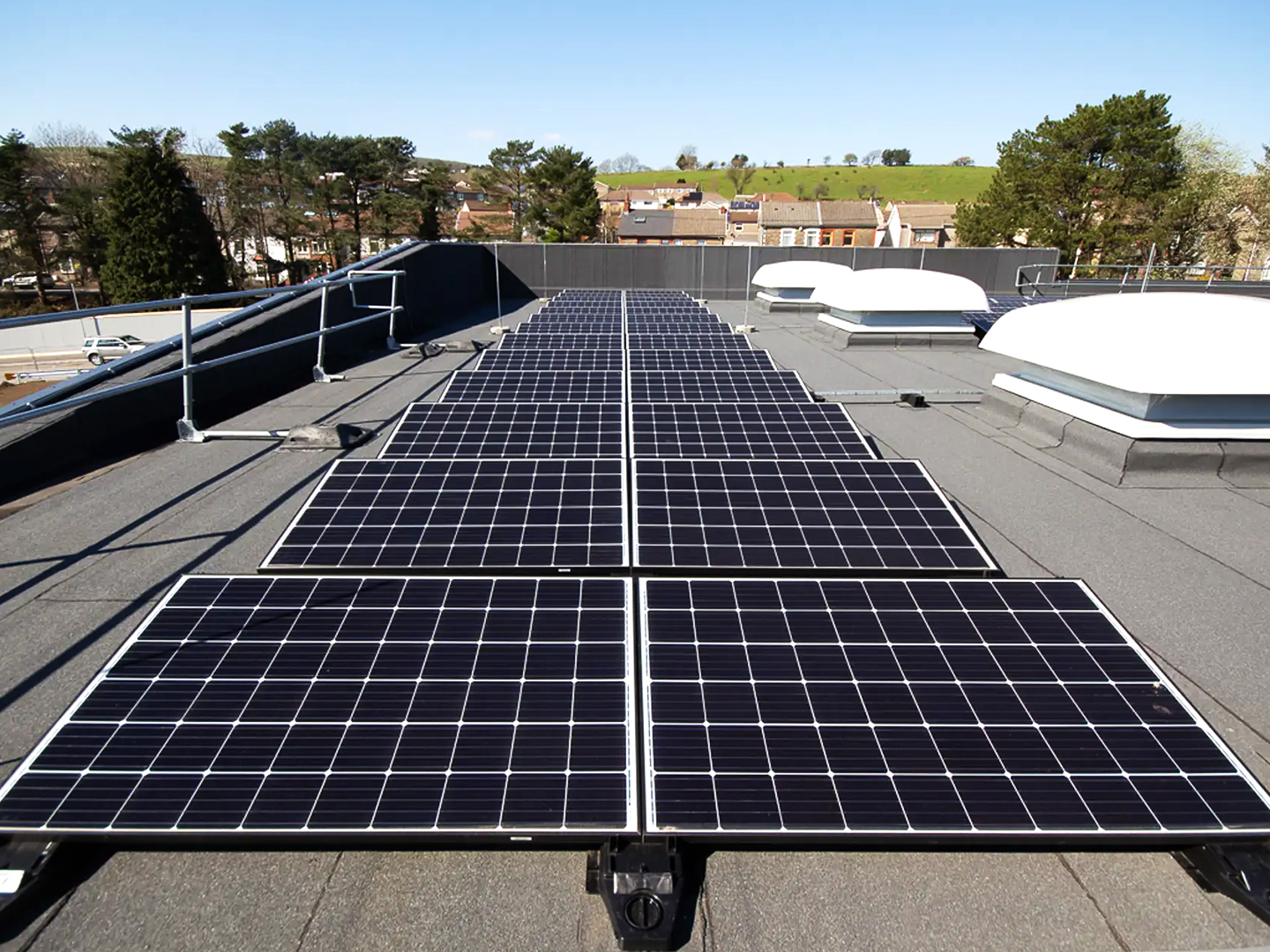
Flat roofs are an ideal location for solar panels
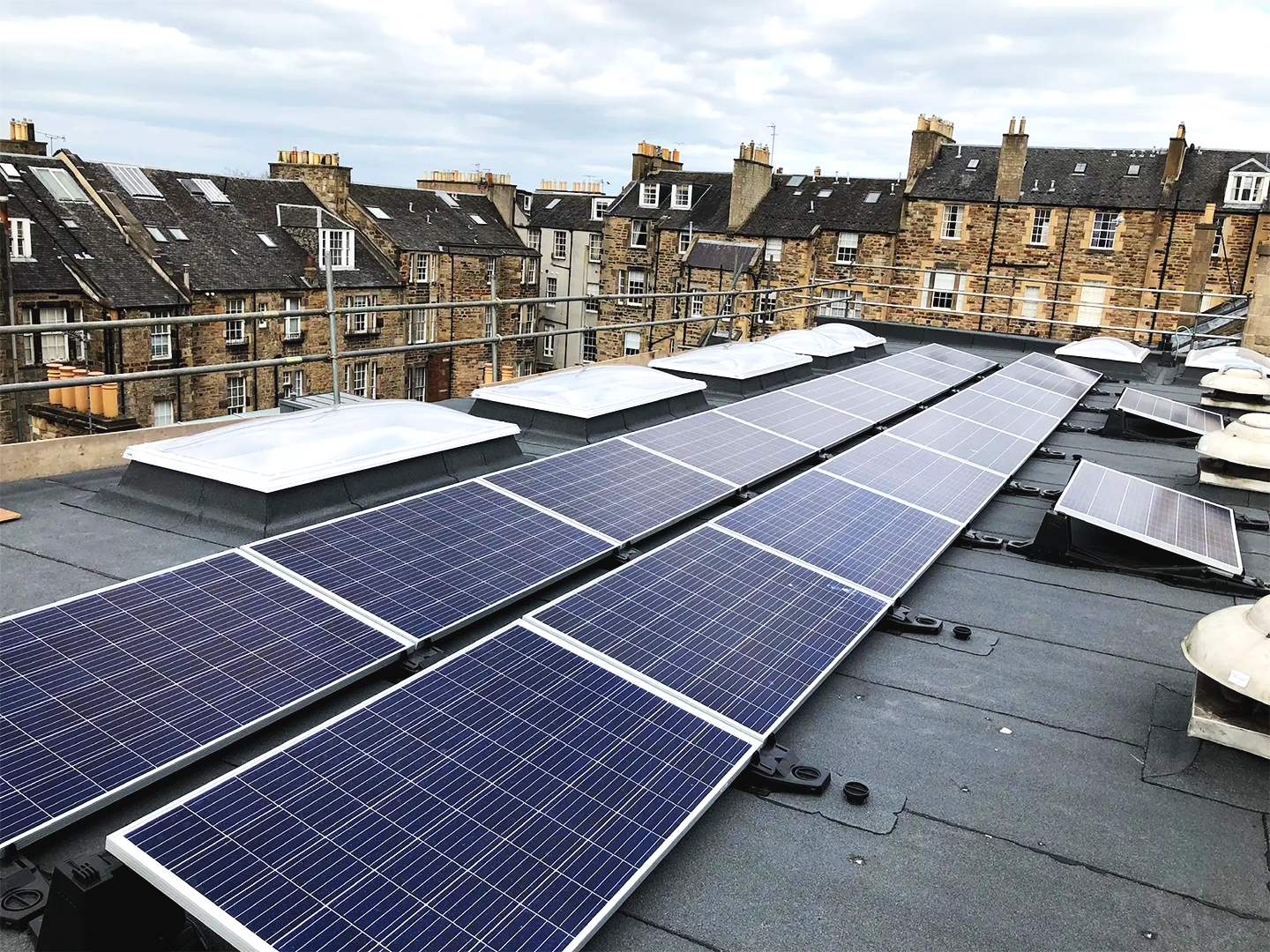
Cost savings
Installing solar PV systems undoubtedly saves money on energy bills, and while variable it can be significant. “For a commercial building, let's say a secondary school, it could comfortably be saving £10,000 a year in electricity,” says Raftery.
“That’s a lot of money and retrofitting a solar PV system to a roof is a straightforward process: there's little internal kit required, and the building is not required to be shut down for a long period. When looking at solar for commercial buildings, compared to lots of other technologies, it makes absolute sense.”
Then there are standards. Raftery says he talks to clients who want to decarbonise, be environmentally friendly, and meet standards like the Future Homes and Buildings standard – which states new homes built from 2025 must produce 75-80% less carbon emissions than homes under the current regulations.
And since the UK’s 2022 energy crisis, “solar PV make absolute economic sense as well. You're ticking all the boxes for clients,” says Raftery.
Regulations and safety
Bauder is part of the call for more targeted fire regulations: “As an industry there's a lot more we could do,” says Raftery. Organisations like Solar Energy UK, the trade organisation for solar, are also pushing for tighter controls. And until regulations regarding solar PV fire protection are in place, the sector must strive to ensure its systems will be future-proofed in protecting buildings and the people within them.
“What we are saying to our clients is if they want to have solar PV on their roof and it has a combustible deck, then our strong recommendation is that a cover board is included because that could be the difference to prevent significant damage and major loss should a fire occur,” says Raftery.



